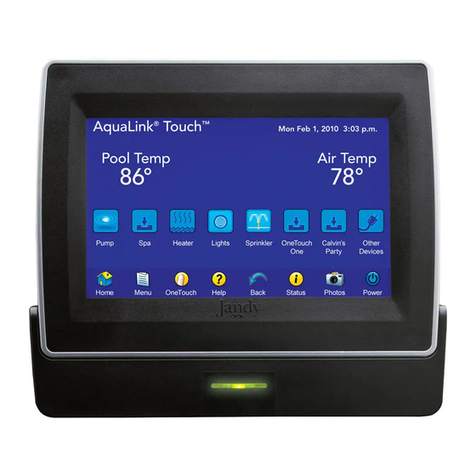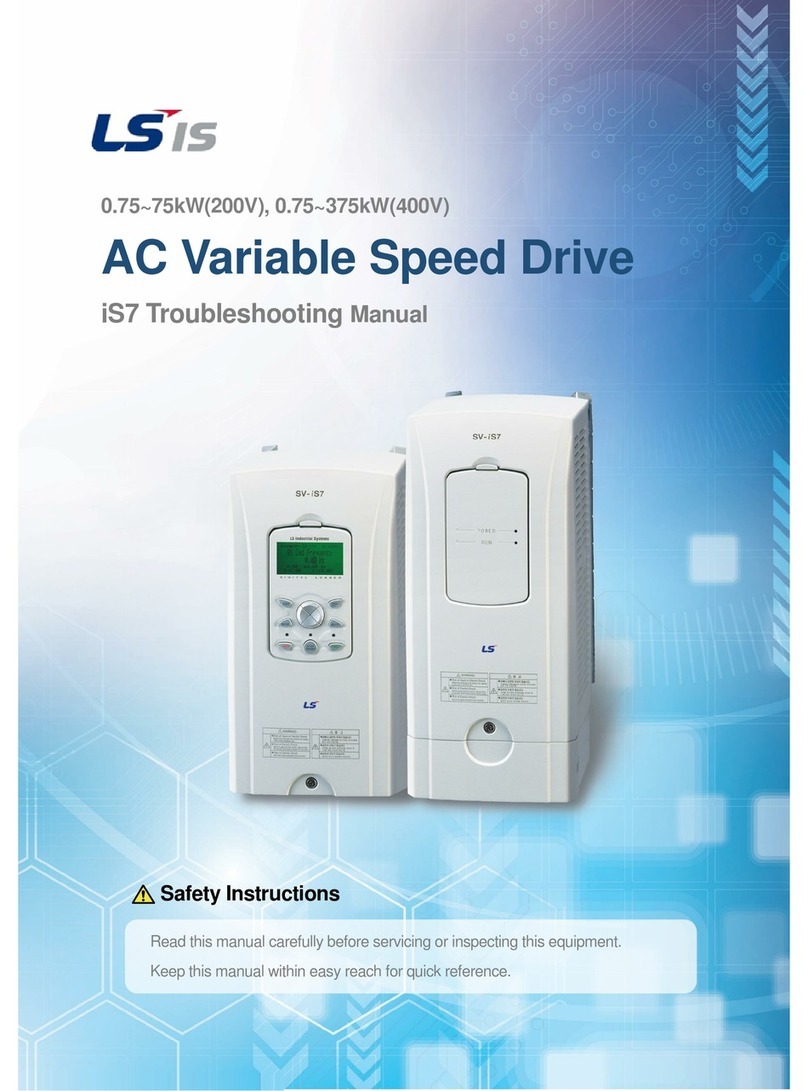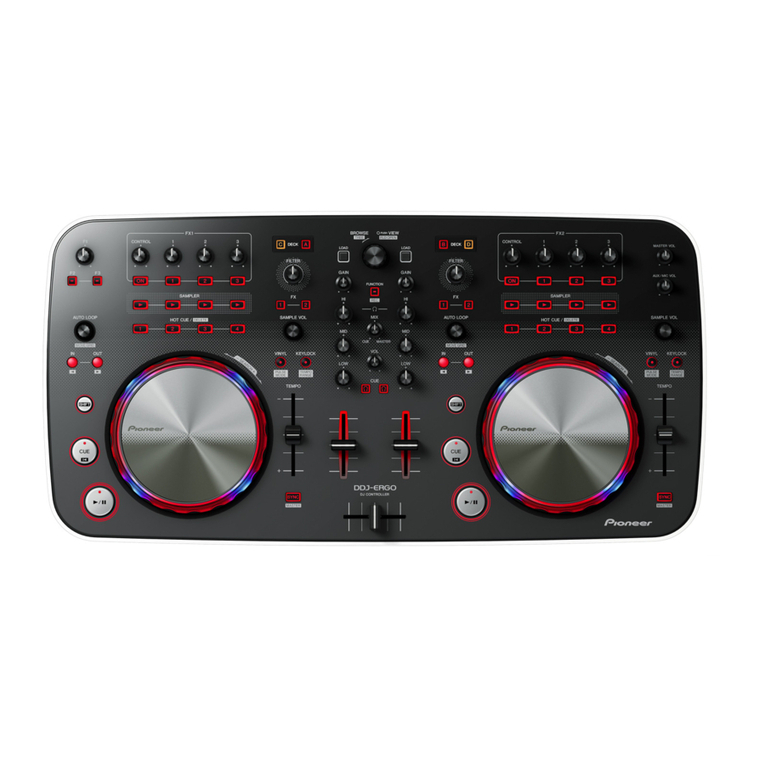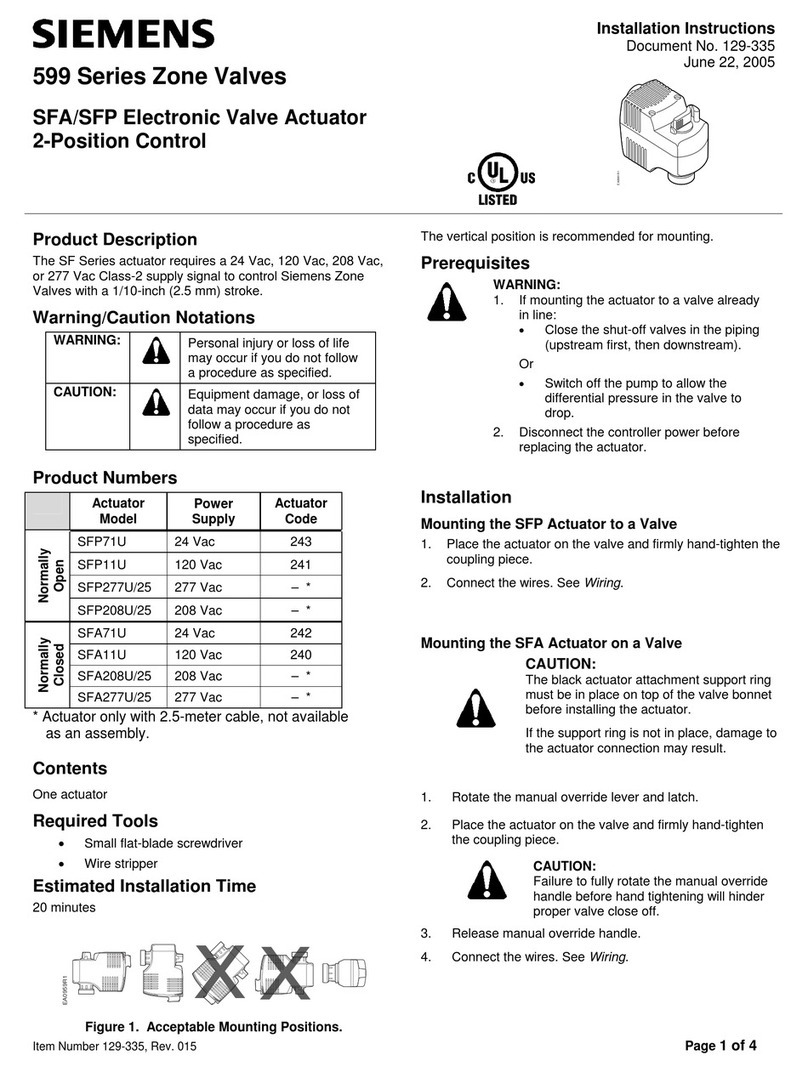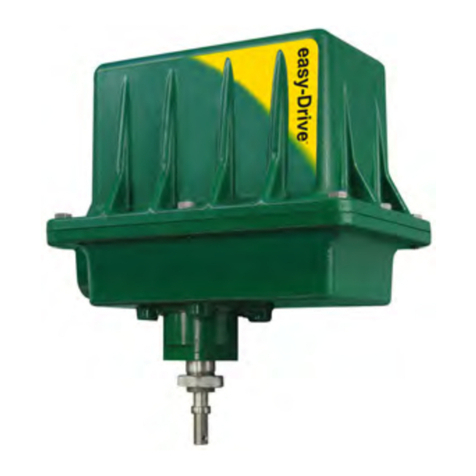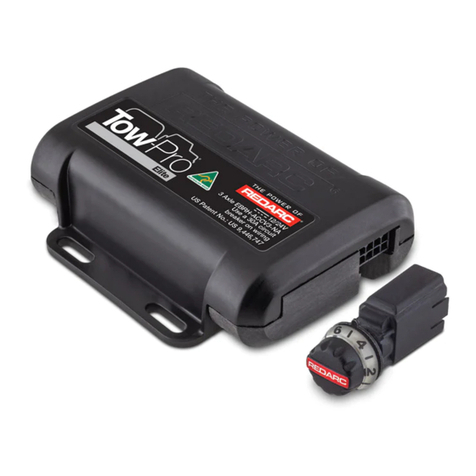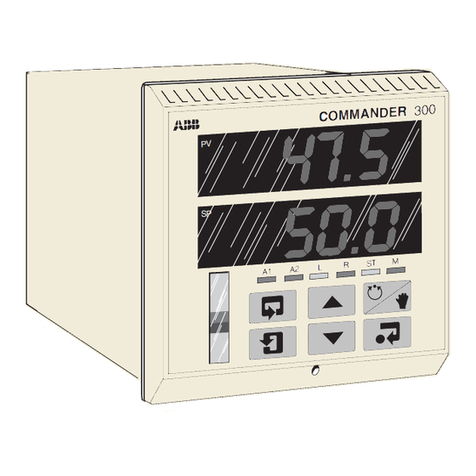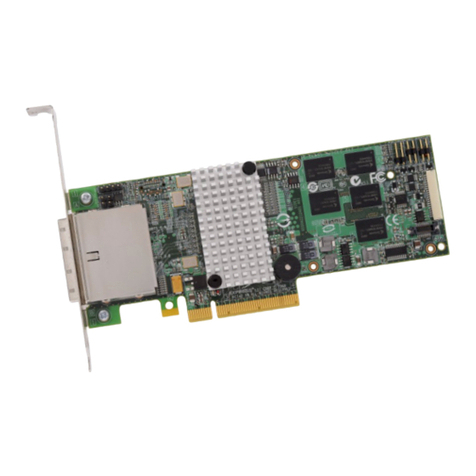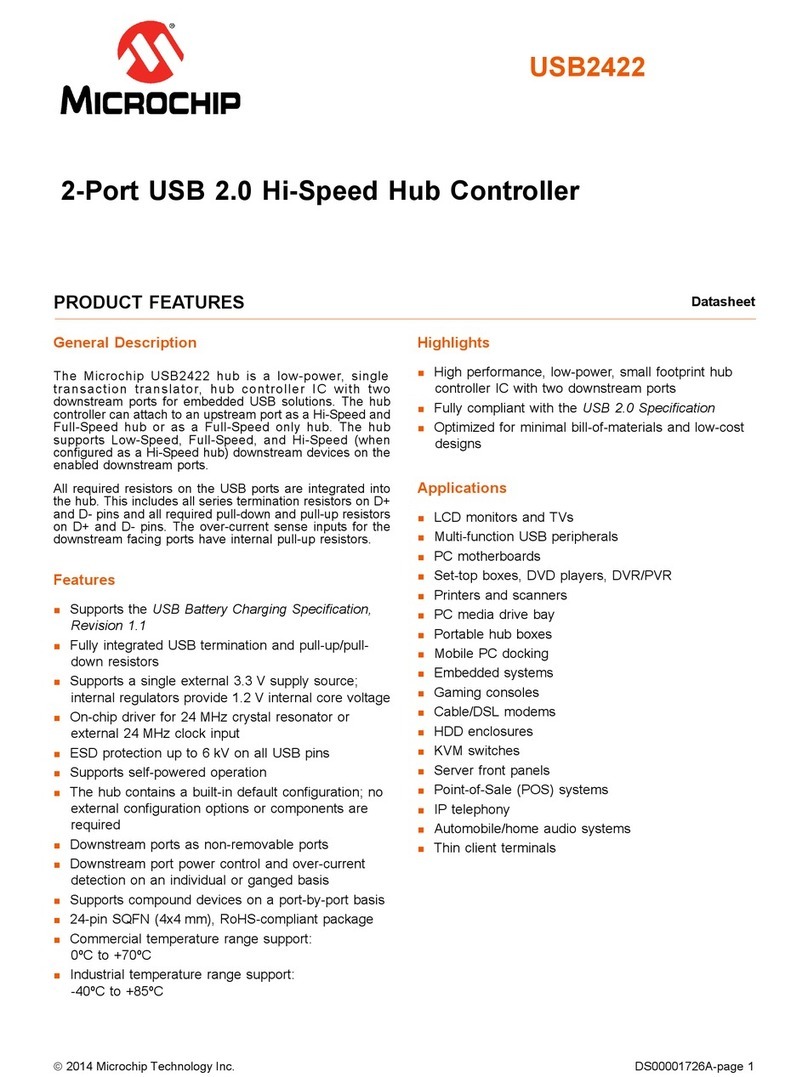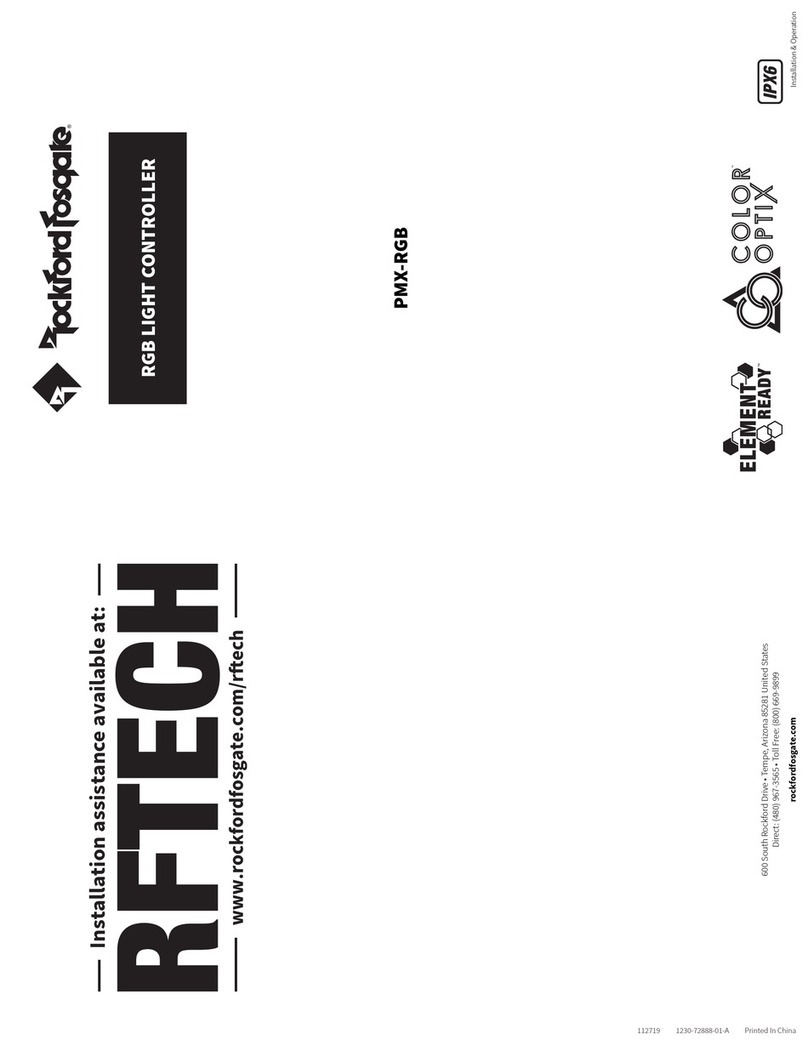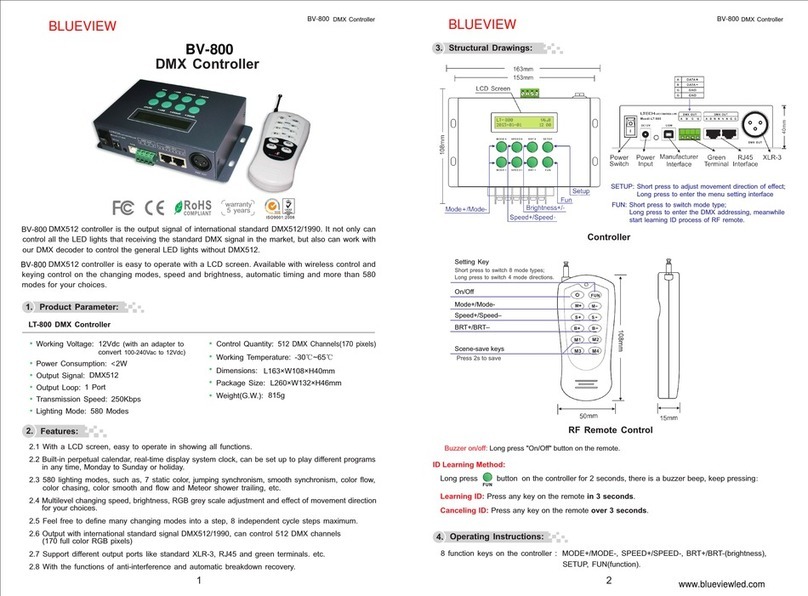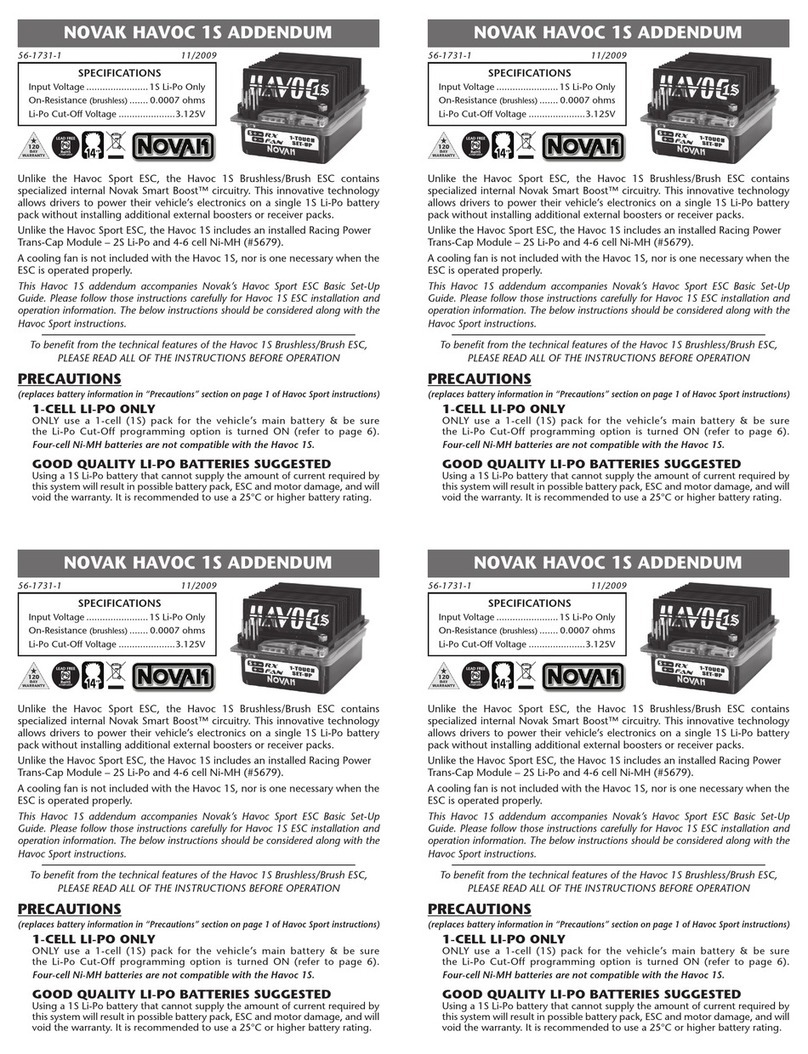Blue I HYDROGUARD HG-702 User manual

HYDROGUARD®HG-702
TurbiPlus®
Water Quality Analyzer &
Controller
User Manual
Document ID HG702TPUM1.3

Blue I Water Technologies |18 Ha'melacha St, Rosh Ha'ayin 4809148, Israel
Tel: 972-9-7680004 |Fax 972-9-7652331 |info@blueitechnologies.com
www.blueitechnologies.com
ii
No part of this publication may be reproduced, transmitted,
transcribed, stored in a retrieval system, or translated into any
language or any computer language, in any form or by any third
party, without the prior written permission of Blue I Water
Technologies Ltd.
Disclaimer
Blue I Water Technologies Ltd. does not accept any
responsibility for any damage caused to its products by
unauthorized personnel. Use of non-Blue I Water Technologies’
reagents and/or replacement parts will void all warranties.
Trademark Acknowledgements
HYDROGUARD®and TurbiPlus®are registered trademarks of
Blue I Water Technologies Ltd.
Copyright © 2014 by Blue I Water Technologies Ltd.

Blue I Water Technologies |18 Ha'melacha St, Rosh Ha'ayin 4809148, Israel
Tel: 972-9-7680004 |Fax 972-9-7652331 |info@blueitechnologies.com
www.blueitechnologies.com
iii
Table of Contents
1General Safety Precautions ............................................................................................... 7
2Preface............................................................................................................................... 9
2.1 Intended Use ............................................................................................................. 9
2.2 Overview of Chapters................................................................................................ 9
3Overview........................................................................................................................... 10
3.1 The HYDROGUARD Solution ................................................................................. 10
3.2 Measurements and Features................................................................................... 11
3.2.1 Wireless Management Package* ........................................................................ 11
3.3 System Components ............................................................................................... 11
4Installation ........................................................................................................................ 15
4.1 Selecting a Location ................................................................................................ 15
4.2 Site Requirements and Installation.......................................................................... 15
4.2.1 Mechanical Installation Requirements................................................................. 16
4.2.2 Mechanical Installation ........................................................................................ 16
4.3 Plumbing Requirements and Installation................................................................. 16
4.3.1 Water Supply....................................................................................................... 16
4.3.2 Colorimeter Drainage........................................................................................... 17
4.4 Electrical Requirements and Installation ................................................................. 18
4.4.1 Connecting the Main Electrical Power................................................................. 18
4.4.2 Input Switches ..................................................................................................... 20
5First Time Operation and Calibration ............................................................................... 20
5.1 Installing Additional Sensors ................................................................................... 20
5.1.1 pH, ORP (Redox) and Temperature Measurements........................................... 20
5.2 Installing Reagents .................................................................................................. 22
5.3 First Time Menu Setup ............................................................................................ 24
5.3.1 HYDROGUARD Control Panel............................................................................ 24
5.3.2 Menus.................................................................................................................. 25
5.3.3 Operator Menu..................................................................................................... 26
5.3.4 Configuring Settings in the Operator Menu......................................................... 28
5.3.5 Technician Menu ................................................................................................. 29
5.3.6 Configuring Settings in the Technician Menu...................................................... 31
5.4 Calibration................................................................................................................ 31
5.4.1 Chlorine Calibration ............................................................................................. 32
5.4.2 pH Calibration...................................................................................................... 33
5.4.3 ORP (Redox) Calibration..................................................................................... 34
5.4.4 Temperature Calibration...................................................................................... 34
5.4.5 Turbidity Calibration............................................................................................. 35
5.5 Calibration and Initial Operation Checklist .............................................................. 35
6Routine Operation and Maintenance ............................................................................... 36
6.1 Monitoring HYDROGUARD Alarms......................................................................... 37
6.2 Replacing Reagents ................................................................................................ 38
6.3 Cleaning the Filter.................................................................................................... 40
6.4 Shut-Down and Winterizing..................................................................................... 42
6.5 Start-up and Preventive Maintenance ..................................................................... 42
6.5.1 Replacing Pump Head and Tubes....................................................................... 43

Blue I Water Technologies |18 Ha'melacha St, Rosh Ha'ayin 4809148, Israel
Tel: 972-9-7680004 |Fax 972-9-7652331 |info@blueitechnologies.com
www.blueitechnologies.com
iv
6.6 Troubleshooting....................................................................................................... 43
6.7 Replacing Components ........................................................................................... 47
6.7.1 Replacing Sensors............................................................................................... 47
6.7.2 Replacing the Temperature Probe ...................................................................... 48
6.7.3 Replacing the Flow Switch................................................................................... 48
6.7.4 Replacing Reagent Siphons................................................................................ 48
6.7.5 Replacing the Reagent Level Switch................................................................... 49
6.7.6 Replacing Reagent Pumps.................................................................................. 49
6.7.7 Replacing the Colorimeter Assembly .................................................................. 49
6.7.8 Replacing the Solenoid Valve.............................................................................. 50
6.7.9 Replacing the Control Panel Module (Electronics Card)..................................... 51
6.7.10 Replacing the I/O Module.................................................................................... 52
6.7.11 Replacing the pH, Redox, and Temperature Card.............................................. 52
6.7.12 Replacing the Colorimeter Card .......................................................................... 52
7Optional Features............................................................................................................. 53
7.1 Optional Measurements .......................................................................................... 53
7.2 Free and Total Chlorine Measurements.................................................................. 53
7.2.1 Installation............................................................................................................ 53
7.2.2 Additional Menus and Settings............................................................................ 56
7.2.3 Total Chlorine Monitoring Setup.......................................................................... 59
7.3 pH, ORP and Temperature Measurements............................................................. 60
7.3.1 Installation............................................................................................................ 60
7.3.2 pH Calibration...................................................................................................... 60
7.3.3 ORP Calibration................................................................................................... 60
7.3.4 Temperature Calibration...................................................................................... 60
7.4 Conductivity Measurement...................................................................................... 60
7.4.1 Installation............................................................................................................ 60
7.4.2 First Time Set-up and General Operation ........................................................... 61
7.4.3 Routine Maintenance........................................................................................... 61
7.4.4 Shut-down and Winterizing.................................................................................. 62
7.5 Flow Meter............................................................................................................... 62
7.5.1 Installation............................................................................................................ 62
7.5.2 Routine Flow Meter Maintenance and Troubleshooting...................................... 63
7.6 Modbus Communication Protocol............................................................................ 64
7.7 Communication Options .......................................................................................... 68
7.7.1 Internal 4-20 mA Output ...................................................................................... 68
7.8 Chlorine Shock Mode .............................................................................................. 70
8Relays and Closed-Loop Control ..................................................................................... 70
8.1 Connecting external equipment to the relays.......................................................... 70
8.2 Wiring to Dosing Systems ....................................................................................... 71
9Setting Proportional Control............................................................................................. 72
9.1 Proportional Control Overview................................................................................. 72
9.2 Setting Proportional Factor...................................................................................... 72
9.3 Setting Pump Period................................................................................................ 74
9.4 Step By Step Proportional Settings ......................................................................... 74
10 Technical Specifications.............................................................................................. 75

Blue I Water Technologies |18 Ha'melacha St, Rosh Ha'ayin 4809148, Israel
Tel: 972-9-7680004 |Fax 972-9-7652331 |info@blueitechnologies.com
www.blueitechnologies.com
v
Table of Figures
Figure 1: HYDROGUARD HG-702 TurbiPlus Components.................................................... 13
Figure 2: Mounting HYDROGUARD on the Wall .................................................................... 16
Figure 3: Pressure Reducer .................................................................................................... 17
Figure 4: Colorimeter Drainage ............................................................................................... 17
Figure 5: Sampling Cell and Colorimeter Components........................................................... 18
Figure 6: 110-120VAC set up.................................................................................................. 19
Figure 7: 210-220VAC set up.................................................................................................. 19
Figure 8: Reagent Bottle Labels.............................................................................................. 22
Figure 9: Mixing Indicator Salt into Indicator Fluid .................................................................. 23
Figure 10: Reagent Bottles and Siphon Caps......................................................................... 23
Figure 11: Reagent Bottles in Position.................................................................................... 24
Figure 12: HYDROGUARD Control Panel .............................................................................. 25
Figure 13: Sensor Reading After Calibration........................................................................... 32
Figure 14: Press Tab above Siphon Cover and Pull Bottle Down........................................... 39
Figure 15: HYDROGUARD Unit's Water Filter........................................................................ 40
Figure 16: Pull Filter from Casing............................................................................................ 41
Figure 17: Wash Filter with Running Water............................................................................. 41
Figure 18: Colorimeter Assembly Unit..................................................................................... 49
Figure 19: Solenoid Valve with Colorimeter Module and Sampling Cell................................. 51
Figure 20: Replacing All Types of Electronic Card.................................................................. 51
Figure 21: Free and Total Chlorine Controller......................................................................... 54
Figure 22: Relay positions on board........................................................................................ 71
Figure 23: Proportional Control of Chemical Dosing............................................................... 72
Figure 24: P-factor computation example ............................................................................... 73
Table of Tables
Table 1 - Control panel structure............................................................................................. 25
Table 2 - Operator Menu Functions and Descriptions............................................................. 26
Table 3 - Operator Menu Functions - Minimum and Maximum Values................................... 27
Table 4 - Technician Menu Functions and Descriptions ......................................................... 29
Table 5 - Technician Menu and Variable Limits ...................................................................... 30
Table 6 - Calibration Table...................................................................................................... 36
Table 7 - Periodic Maintenance Schedule............................................................................... 36
Table 8 - Alarm Descriptions and Results............................................................................... 37
Table 9 - Troubleshooting: Alarm Descriptions and Solutions ................................................ 44
Table 10 - Troubleshooting: Problems and Suggested Solutions........................................... 46
Table 11 - Additional features in Operator Menu (With Total Chlorine Monitoring) ................ 56

Blue I Water Technologies |18 Ha'melacha St, Rosh Ha'ayin 4809148, Israel
Tel: 972-9-7680004 |Fax 972-9-7652331 |info@blueitechnologies.com
www.blueitechnologies.com
vi
Table 12 - Additional Alarms (With Total Chlorine Monitoring) ............................................... 56
Table 13 - Alarms (With Total Chlorine Monitoring)................................................................ 57
Table 14 - Technician Menu (With Total Chlorine Monitoring)................................................ 58
Table 15 - Modbus Configuration Options............................................................................... 65
Table 16 - Modbus Communications Options ......................................................................... 66
Table 17 - Relays and their controlled dosing systems........................................................... 72

Blue I Water Technologies |18 Ha'melacha St, Rosh Ha'ayin 4809148, Israel
Tel: 972-9-7680004 |Fax 972-9-7652331 |info@blueitechnologies.com
www.blueitechnologies.com
7
1 General Safety Precautions
This section presents important information intended to ensure safe and
effective use of this product.
Read the following carefully before handling the product. These warnings and
cautions must be followed carefully to avoid injury to yourself or damage to
equipment.
Warning: Only properly trained and licensed
electricians should attempt to wire or service the
electronic components of the analyzer/controller.
There is an Electrical Shock Hazard when
servicing this system.
Always verify that all electrical power source(s)
are off before opening the analyzer/controller
unit or attempting to service electronic
components or wiring.
Attention! Seuls des électriciens qualifiés ayant
reçu la formation adéquate peuvent
entreprendre le branchement, l’entretien ou la
réparation des composants électroniques de
l’analyseur/du contrôleur.
Il existe un risque de choc électrique lors de
l’entretien de ce système.
Ayez soin de toujours vérifier que la ou les
source(s) d’alimentation électrique est ou sont
bien déconnectée(s) avant d’ouvrir l’unité ou
d’entreprendre toute opération de service
technique et tout branchement des composants
électroniques.
Caution: Extreme caution should be used when
installing, operating, and maintaining the
HYDROGUARD®Analyzer. Only properly
trained technicians are authorized to install and
maintain the analyzer/controller.
Attention! Il y a lieu d’agir avec une extrême
prudence lors de l’installation, de la mise en
œuvre et de la maintenance du contrôleur
HYDROGUARD®. Seuls des techniciens dûment
formés à cet effet sont autorisés à effectuer
l’installation et la maintenance de l’analyseur/du
contrôleur.
Only properly trained and licensed operators
should attempt to make any changes to
chemical dosing levels.
Seuls des opérateurs qualifiés ayant reçu la
formation adéquate sont habilités à modifier les
dosages des produits chimiques utilisés.
Always follow local health and safety regulations
when performing any service on the
analyzer/controller unit or when changing
chemical dosing settings.
Conformez-vous sans exception aux consignes
locales de santé et de sécurité lorsque vous
effectuez toute opération technique sur
l’analyseur/le contrôleur, ou lorsque vous
modifiez les paramètres de dosages chimiques.
The main power supply may be connected to
either 110-120 or 220-240VAC 50/60Hz.
Switching between voltages is accomplished by
changing two (2) jumpers located above the
main power connection, to the left of the
transformer. For 110-120VAC, a 1amp fuse
should be use; for 220-240VAC, a 0.5amp fuse
should be used. These changes must be
completed prior to wiring.
L’alimentation générale peut être branchée sur
110-120 ou sur 220-240VAC 50/60Hz. Pour
basculer d’une tension à l’autre, il suffit de
changer les deux (2) cavaliers situés au-dessus
de la principale connexion électrique, à gauche
du transformateur. Une tension à 110-120VAC
requiert un fusible de 1 Amp. ; une tension à
220-240VAC requiert un fusible de 0,5 Amp.
Ces modifications doivent être accomplies avant
le branchement électrique.

Blue I Water Technologies |18 Ha'melacha St, Rosh Ha'ayin 4809148, Israel
Tel: 972-9-7680004 |Fax 972-9-7652331 |info@blueitechnologies.com
www.blueitechnologies.com
8
Caution: Before connecting to a power source,
confirm that both jumpers are located on the
correct voltage and that the appropriate fuse is
in place.
Attention! Avant de relier l’appareil à une
quelconque alimentation électrique, vérifiez que
les deux cavaliers sont situés sur les valeurs
correctes de tension et que c’est le bon fusible
qui est en place.
Each relay connection is limited to 4 amps, to
prevent overheating. The relays may show a
higher rating but do not connect equipment
exceeding 4 amps.
Chaque connexion relais est limitée à 4 Amp.
afin d’éviter toute surchauffe. Même si les relais
affichent éventuellement une valeur supérieure,
ils ne se connecteront pas à un élément
dépassant 4 Amp.
All electrical connections should comply with
National Electrical Code (NEC) and all local
regulations.
Tous les branchements électriques doivent être
conformes au Code Electrique National (NEC –
National Electrical Code) ainsi qu’à toutes les
consignes locales.
Mixing reagents:
Caution: Use protective gear as recommended
in MSDS.
Mélanges réactifs:
Attention! Utilisez l’équipement de protection
préconisé dans la fiche de données de sécurité
(MSDS).
Caution: Do not use chemicals that reduce the
surface tension. When using hydrochloric acid,
observe all safety regulations.
Attention! N’utilisez pas de produits chimiques
susceptibles de réduire la tension superficielle.
Lors de l’utilisation d’acide chlorhydrique,
appliquez scrupuleusement toutes les consignes
pertinentes.
Caution: HYDROGUARD's control board unit
should not be opened except for initial
installation and troubleshooting, and should only
be opened by a trained and approved
technician.
Attention! Le tableau de commandes de
l’HYDROGUARD ne doit en aucun cas être
ouvert si ce n’est lors de l’installation initiale et
en cas de dépannage –auquel cas son
ouverture ne doit être effectuée que par un
technicien ayant reçu la formation adéquate et
dûment habilité.

Blue I Water Technologies |18 Ha'melacha St, Rosh Ha'ayin 4809148, Israel
Tel: 972-9-7680004 |Fax 972-9-7652331 |info@blueitechnologies.com
www.blueitechnologies.com
9
2 Preface
2.1 Intended Use
This manual is for qualified and trained service technicians who will install and service the
HYDROGUARD HG-702 TurbiPlus Water Quality Analyzer. It provides instructions on how to install the
HYDROGUARD system, how to integrate it with external chemical dosing systems and how to calibrate,
operate and maintain the system.
2.2 Overview of Chapters
This document is functionally divided into chapters according to the various steps involved in
installing and operating the HYDROGUARD system.
Chapter 1:
General Safety Precautions
This section presents important information intended to ensure
safe and effective use of this product.
Chapter 2:
Preface
Intended use of the manual and safety issues
Chapter 3:
Controller Overview
General description of how water quality is maintained and how
HYDROGUARD automatically
monitors and controls
Chapter 4:
Installation
Instructs how to install HYDROGUARD and how to
integrate it with water quality systems
Chapter 5:
First Time Set-up
Instructs how to configure, calibrate, and operate the
HYDROGUARD system immediately after it is installed
Chapter 6:
Routine Operation and
Maintenance
Instructs how to respond to alarms and troubleshooting
issues
Chapter 7:
Optional features
Describes some optional components that may
be installed on the controller or added later
Chapter 8:
Relays & Closed-Loop
Control
Lists and describes HYDROGUARD's operational
components
Chapter 9:
Setting Proportional
Control
Describes how HYDROGUARD implements proportional
monitoring and control and instructs how to configure it
in various environments

Blue I Water Technologies |18 Ha'melacha St, Rosh Ha'ayin 4809148, Israel
Tel: 972-9-7680004 |Fax 972-9-7652331 |info@blueitechnologies.com
www.blueitechnologies.com
10
Chapter 10:
Technical Specifications
Includes information about dimensions, electrical systems,
relays, measurement of chlorine, turbidity and pH, etc.
3 Overview
The HYDROGUARD HG-702 TurbiPlus Water Quality Analyzer & Controller continuously
monitors and automatically controls chemical levels in process water and potable water
applications. HYDROGUARD performs automated analysis of free and/or total chlorine,
turbidity, pH, ORP (redox), temperature, conductivity and flow rate, administering chemicals
as required, according to the results of these tests.
3.1 The HYDROGUARD Solution
Various methods have been developed over the years to monitor the concentration and
balance of chemicals used in water treatment. HYDROGUARD measures free and/or total
chlorine levels with a digital photometer, which has many advantages over other types of
sensors. Digital photometer testing is completely objective. It is not dependent on lighting
conditions or the operator’s eyesight, and is far more accurate. It does not require frequent
calibration and is compatible with all types of disinfectant systems. HYDROGUARD performs
colorimetric testing in a closed reading cell. It is the only system that automatically and
accurately measures free chlorine using small amounts of reagent.
HYDROGUARD provides a turbidity measurement in NTU (Nephelometric Turbidity Units).
This provides a consistently objective evaluation of the overall water quality. High turbidity
may be a result of poor filtration or unbalanced water chemistry. The turbidity value will
provide an indication that one of these conditions exists and that action is required to improve
the water quality. In many cases the turbidity can be reduced by adding a flocculent to the
filter which will improve filtration. A turbidity relay is included in the controller and will operate
when turbidity is above the set point. This may be connected to a flocculent dosing pump or
other equipment used to reduce turbidity, providing an automatic response and maintaining
clear water without manual intervention. Likewise, if the turbidity ever exceeds a pre-set limit,
the controller will set off an alarm indicating that attention is required.
Once installed and calibrated, HYDROGUARD is fully automatic. It will monitor and can
control dosing systems directly, releasing the proper quantity of chemicals based on frequent
automatic measurements. HYDROGUARD is simple to use. Its straight-forward control panel
and parameters menu make chemical balance control an easy task. All basic information can
be viewed at a glance, and changing settings is as simple as scrolling through the menu and
adjusting the current settings.

Blue I Water Technologies |18 Ha'melacha St, Rosh Ha'ayin 4809148, Israel
Tel: 972-9-7680004 |Fax 972-9-7652331 |info@blueitechnologies.com
www.blueitechnologies.com
11
3.2 Measurements and Features
The HYDROGUARD HG-702 TurbiPlus can be configured to measure any combination of the
following water quality parameters:
Free chlorine
Total chlorine
Both free chlorine and total chlorine
Turbidity
Optional measurements:
Temperature
Conductivity
pH
ORP (redox)
Temperature
Flow rate
Optional communication protocol
Modbus Protocol
Blue I Protocol
Several communication options are also available:
Internal 4 to 20 mA outputs (up to 6 channels)
Wireless modem
Ethernet
Modbus
3.2.1 Wireless Management Package*
An advanced and unique HYDROGUARD option is the wireless modem which provides web-
based monitoring of up to 5 analyzers. This cellular communicator collects HYDROGUARD’s
alarms and readings and transmits them to a web-based application server. The information
is easily accessed via the Internet or mobile device.
*The wireless modem is an optional module.
Note: Not all cellular companies support this wireless modem. Please contact Blue I Water
Technologies or your supplier for details. See the supplemental manual for instructions on
installing and using the modem.
3.3 System Components
HYDROGUARD has two primary units: the analyzing unit and the control unit.
The analyzing unit performs the actual measurements. It contains the following components:
Colorimetric Assembly Unit –A closed cell that measures free and/or total chlorine levels
using DPD reagents and a digital photometer, and measures turbidity levels using a
nephelometer.

Blue I Water Technologies |18 Ha'melacha St, Rosh Ha'ayin 4809148, Israel
Tel: 972-9-7680004 |Fax 972-9-7652331 |info@blueitechnologies.com
www.blueitechnologies.com
12
Sampling Cell –Contains the sensors, including the pH, Redox (ORP) and temperature
sensors.
Reagent Bottles –Contains the reagents used by the colorimeter to measure chlorine levels
in the water.
Reagent Pumps and Solenoid Valve –Accurately controls the flow of water and reagents
into the colorimeter, making every measurement as accurate as possible.
The control unit includes all electronics, the user interface and the software that controls the
measurements performed in the analyzing unit. It includes the following components:
I/O Module (Input/Output) –Providing power to the analyzer and containing the dry-contact
relays for direct control of external dosing systems.
Control Panel –Calculates the measurement results and determines the required chemical
dosing to maintain an appropriate chemical balance in closed-loop systems. The control panel
also provides data to external communication devices such as the 4-20 mA outputs, wireless
modem or Modbus communication.
Keyboard Panel –Mounted on the cover of the control module, the keyboard panel functions
as HYDROGUARD’s user interface. This control panel displays current measurements and
indicates alarms. All settings and adjustments are performed through the control panel.
Colorimeter Card –Controls the colorimeter and associated components, such as the
reagent pumps and solenoid valve. It accurately calculates the chlorine and turbidity levels.
pH, Redox, Temp Module* –Receives signals from the pH, redox, and temperature probes.
Internal 4-20 Input Module* –Contains connections for turbidity and conductivity meter and
a 4-20 flow meter.
Internal 4-20 Output Module* –Provides up to six 4-20 mA outputs for any measured
variable.
*Optional module

Blue I Water Technologies |18 Ha'melacha St, Rosh Ha'ayin 4809148, Israel
Tel: 972-9-7680004 |Fax 972-9-7652331 |info@blueitechnologies.com
www.blueitechnologies.com
13
1
3
4
6w
6b
5
8
9
7
2
10
11
12
13
14
15
16
17
18
21
20
22
23
25
24
19
26
Figure 1: HYDROGUARD HG-702 TurbiPlus Components

Blue I Water Technologies |18 Ha'melacha St, Rosh Ha'ayin 4809148, Israel
Tel: 972-9-7680004 |Fax 972-9-7652331 |info@blueitechnologies.com
www.blueitechnologies.com
14
Illustrated Part Number
Part Description
1
Lab Door
2
Door Axis
3
Door +Touch panel HG-702
4
DPD1 Reagent Set
not shown
DPD3 Reagent Set
5
Level/float Switch
6b
Bottle Holder - blue
6w
Bottle Holder - white
6r
Bottle Holder - red
7
Pump Tubes
8
Pump Head
9
Pump Motor
not shown
Peristaltic Pump
10
Solenoid Valve
11
Solenoid O-rings
12
Colorimeter Assembly Unit for TurbiPlus
13
Injection Module
14
Colorimeter Card
15
AMP/pH/TEMP
/REDOX CARD
16
I/O Module
17
Control Panel Module HG-702 FAT for TurbiPlus*
17
Control Panel Module HG-702 FOT for TurbiPlus *
18
Pre-filter Assembly
19
Cartridge filter
not shown
Pressure reducer gage
20
pH Probe
21
ORP Probe
22
Temp Probe (PT-100)
23
Rotating Flow Switch
24
LED Module
25
Pressurized Sampling Cell
26
Colorimeter Drain
27
Colorimeter Drain Funnel

Blue I Water Technologies |18 Ha'melacha St, Rosh Ha'ayin 4809148, Israel
Tel: 972-9-7680004 |Fax 972-9-7652331 |info@blueitechnologies.com
www.blueitechnologies.com
15
4 Installation
4.1 Selecting a Location
HYDROGUARD installation begins with manual installation and connecting the unit to the
system that it controls, as described in this chapter. Once physically installed, sensors and
reagents must be inserted into the unit and the control system must be started and
calibrated, as described in Chapter 5, First Time Operation and Calibration. HYDROGUARD
should operate for several days in order to be properly tuned to its specific environment.
Additional periodic modification, calibration, and maintenance are required after
HYDROGUARD has been operating on a regular basis. This is described in Chapter 6,
Routine Operation and Maintenance.
Convenient access –HYDROGUARD should be installed where it can easily be viewed and
operated.
Dry area –HYDROGUARD is operated by electricity and includes electronic circuitry that is
susceptible to short-circuiting and/or corrosion when exposed to water or high ambient
moisture levels; therefore, the unit should be installed in a dry area.
Away from chemicals –Many water treatment chemicals can be corrosive to
HYDROGUARD’s electronic circuitry. It is highly recommended that the unit is not installed
adjacent to a storage area for chemicals or the dosing systems themselves.
Minimal distance from supply pipe –The water sampling line that is connected to the main
pipe which feeds the HYDROGUARD should be as short as possible. A long sample line
creates unnecessary delay between supply, measurement, analysis and chemical dosing.
Drainage –HYDROGUARD’s location should allow the colorimeter drain outlet sufficient
grade for gravity flow, without creating an obstacle (e.g., no pipe across walkway). The
sampling cell may be pressurized to allow for return to the system under pressure.
Freezing and changing temperatures –The analyzer should be installed in a location that is
not susceptible to freezing temperatures. This is because reagents can freeze, preventing
accurate readings (even when thawed); and parts may be damaged due to expansion when
ice forms. Avoid installing in a location that is exposed to extreme temperature fluctuations;
sudden water temperature changes can affect readings.
4.2 Site Requirements and Installation
The HYDROGUARD assembly is wall-mounted. It should be located on a wall where
operators and service technicians can easily access it for normal operation and maintenance.
It is also advisable to install it where the operators can easily view the readings and alarms.
The complete unit with all connections weighs 24.3 lbs (11 kg), so it must be mounted
securely on a stable wall.
The HYDROGUARD unit measures as follows (W x H x D):
Controller: 26.4” x13” x 5.1” (67 cm x 33 cm x 13 cm).
Mounting board: 31.5” x21.7” x 0.2” (80 cm x 55 cm x 0.5 cm).
The base of the controller should be mounted at least 24” (61 cm) above the floor (preferably
at eye level).
Note: During disassembly, be sure to retain all hardware for use during reassembly.
Upgrade and replacement kits may re-use some original components.

Blue I Water Technologies |18 Ha'melacha St, Rosh Ha'ayin 4809148, Israel
Tel: 972-9-7680004 |Fax 972-9-7652331 |info@blueitechnologies.com
www.blueitechnologies.com
16
4.2.1 Mechanical Installation Requirements
The HYDROGUARD unit and its mounting panel are not shipped with mounting screws or
anchors. The installer must provide screws and anchors that can hold the weight of the
HYDROGUARD unit, mounting panel, intake filter and electrical outlets and junction boxes.
The screws and anchors must be compatible with the wall where it will be installed.
4.2.2 Mechanical Installation
The following procedure instructs how to install the HYDROGUARD unit.
1. HYDROGUARD is shipped pre-mounted on a mounting panel, along with a water filter.
2. Attach the water filter before mounting the panel on the wall.
The mounting panel includes four screw holes, one in each corner.
3. Determine the location on the wall for each hole on the HYDROGUARD unit or on the
mounting panel; drill the holes and insert screw anchors.
Figure 2: Mounting HYDROGUARD on the Wall
4. Place a 5/16” (8 mm) screw in each hole and two metal washers (supplied with the
unit) on each screw behind the mounting panel, so that they come between the
mounting panel and the wall. Screw the panel to the wall.
Note: The HG-702 TurbiPlus must be leveled in order to achieve proper operation.
4.3 Plumbing Requirements and Installation
4.3.1 Water Supply
HYDROGUARD requires a pressurized water supply to the sampling cell. An isolating valve
must be installed between the main line and the pipe (or tube) to the HYDROGUARD filter.
The distance from the main pipe to the HYDROGUARD should be as short as possible, in
order to minimize delay time between the water being sampled and HYDROGUARD’s
measurement.
Minimum inlet pressure should be 4.4 psi (0.3 bar) and should not exceed 14.5 psi (1 bar)
using a pressure reducer attached to the pre-filter outlet (Figure 3).

Blue I Water Technologies |18 Ha'melacha St, Rosh Ha'ayin 4809148, Israel
Tel: 972-9-7680004 |Fax 972-9-7652331 |info@blueitechnologies.com
www.blueitechnologies.com
17
Figure 4: Colorimeter Drainage
Figure 3: Pressure Reducer
4.3.2 Colorimeter Drainage
A gravity drainage connection is required for the water draining out from the colorimeter. A
pressurized, vacuum, or gravity connection is required from the outlet of the sampling cell to
return water from the sampling cell to the water supply. The length of the colorimeter drain
line should be as short as possible and must have a constant downward slope to prevent
backflow.
The sampling cell may be pressurized up to 14.5 psi (1 bar); if the sampling cell drain is
connected to vacuum, the inlet pressure must be at least 7 psi (0.5 bar) greater than the drain
vacuum. A drain cap is located on the colorimeter outlet to prevent backflow into the
colorimeter if the drain line is blocked. A ½” NPT fitting is supplied for the colorimeter drain
connection and a ¼” FNPT fitting is supplied for the sampling cell drain connection.
Note
The HYDROGUARD colorimeter drains water at zero (0) pressure. The drainage pipe should
be as straight as possible. It should have a constant downward slope and should not have
any bends where water flow can be restricted. If the colorimeter drains to a bucket or basin,
the end of the drainage pipe should terminate above the bucket or basin rim.

Blue I Water Technologies |18 Ha'melacha St, Rosh Ha'ayin 4809148, Israel
Tel: 972-9-7680004 |Fax 972-9-7652331 |info@blueitechnologies.com
www.blueitechnologies.com
18
4.4 Electrical Requirements and Installation
HYDROGUARD requires a 100-120 or 220-240 VAC, 50/60 Hz electrical power source on a
separate 16A circuit in the facility’s electrical board. The main HYDROGUARD power supply
should be connected to a non-dependent power supply, so that the unit remains powered
constantly. The active relays should be connected to a dependent power supply (interlocked
power supply).
4.4.1 Connecting the Main Electrical Power
Note
HYDROGUARD HG-702 TurbiPlus default configuration is 100-120VAC unless 220-240VAC
configuration was ordered.
The main power supply may be connected to either 110-120 or 220-240VAC 50/60Hz.
Switching between voltages is accomplished by changing two (2) jumpers located above the
main power connection, to the left of the transformer. For 110-120VAC, a 1amp fuse should
be used; for 220-240VAC, a 0.5amp fuse should be used. These changes must be completed
prior to wiring.
Caution:
Before making a connection to a power source, confirm that both jumpers are
located on the correct voltage and that the appropriate fuse is in place.
1. Verify that the power switch or circuit breaker to the non-dependent power source is
off.
2. Connect the line (live) wire to the electronic relay card connector marked Line.
3. Connect the neutral wire to the electronic relay card connector marked Neutral.
Figure 5: Sampling Cell and Colorimeter Components

Blue I Water Technologies |18 Ha'melacha St, Rosh Ha'ayin 4809148, Israel
Tel: 972-9-7680004 |Fax 972-9-7652331 |info@blueitechnologies.com
www.blueitechnologies.com
19
4. Connect the earth wire to the I/O card connector marked Ground.
5. Continue with the other electrical connections.
6. Turn on electrical power only after all electrical connections have been completed.
Figure 6: 110-120VAC set up
For information on wiring and using the relays as dry contact or for control, see section 7.8
below: Chlorine Shock Mode.
Figure 7: 210-220VAC set up

Blue I Water Technologies |18 Ha'melacha St, Rosh Ha'ayin 4809148, Israel
Tel: 972-9-7680004 |Fax 972-9-7652331 |info@blueitechnologies.com
www.blueitechnologies.com
20
4.4.2 Input Switches
Flow input switch terminal blocks on the I/O module allow for three input switches to be
connected to the system as additional layers of security against accidental chemical additions
when there is no flow. If a connection is expected but not detected at each input, the
analyzer/controller will indicate an alarm and will close all relays (and open the alarm relay).
Therefore, if a safety switch (flow, level, etc.) will not be installed, a fixed connection (jumper
wire) is required to allow the controller to operate.
Two flow switches (included) and one flow meter (not included) may be connected:
Internal Flow Switch: Flow switch connected to the analyzer’s sampling cell. Supports
both 2- and 3-wire flow switches.
oIf a 2-wire switch is used, it should be connected to the “In” and “Gnd”
connections. If a 3-wire switch is used, the “VCC” connection will also be
used.
External Flow Switch: Connection for an external 2-wire flow switch.
oIf an external switch is not connected, the Internal Flow Switch must be
installed for the analyzer to operate properly.
Flow Meter: Connection for 2- or 3-wire flow meter. The analyzer will not display flow
meter readings on the LCD display until “flow sensor” is turned ON in the Technician
Menu (See section 5.3.5); Therefore, no jumper is required if a meter is not installed.
Caution
Electrical connections depicted in this section are ONLY recommendations. All electrical
connections should comply with National Electrical Code (NEC) and all local regulations.
5 First Time Operation and Calibration
5.1 Installing Additional Sensors
Install all additional sensors and meters and connect to the main system of the
HYDROGUARD HG-702 TurbiPlus, following the instructions for each sensor as follows.
5.1.1 pH, ORP (Redox) and Temperature Measurements
5.1.1.1 Installation
If the HYDROGUARD system was ordered with these components some steps in this process
will have been completed in the factory and may be skipped.
Required Components
pH, ORP, Temp Module (electronics card)
150 mm flat cable
pH probe
ORP (Redox) probe
Temperature probe
Connectors for temperature probe
Note
The system may be operated with only pH or only ORP but must always have the
temperature probe as this provides additional grounding to ensure reliable pH and ORP
measurements.
Other manuals for HYDROGUARD HG-702
3
Table of contents

